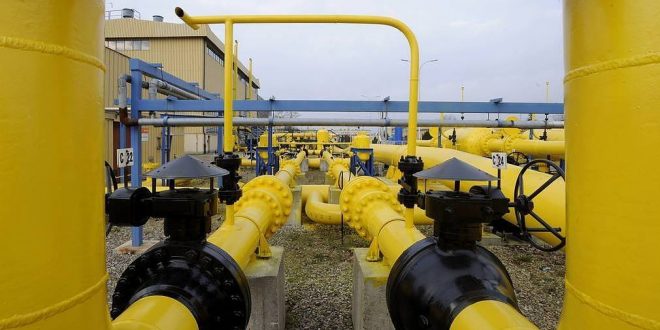European Union Energy Commissioner Kadri Simson after a meeting with energy ministers of EU member-countries in Amiens in France on Saturday, said that the gas storage for this time of the year was less than usual, and announced that she will visit Washington and Azerbaijan next month to discuss the supply issue.
Liquefied Natural Gas (LNG) prices in Europe have remained high in the wake of the political crisis in Ukraine, and the fear that Russia might cut off gas supplies. Russia has denied that it has manipulated supplies to keep the prices high.
Meanwhile, there is a Bloomberg report that says the United States President, Joe Biden, will hold talks with Qatar’s Emir Tamim Bin Hamad Al Thani in Washington to help Europe with gas supplies.
Simson has issued a reassuring message in the middle of the flurry of talks. She said, “My message is that Europe has a robust, well diversified and resilient gas infrastructure and clear procedures of solidarity in case of emergencies.” Europe depends for one-third of its gas supplies on Russia.
There is the apprehension that if there is a precipitation of crisis in Ukraine, Russia is likely to cut off the crucial gas supply. Gas prices in Europe have generally been high because of coal shortages and increased dependence on natural gas for its energy consumption.
The development should not come as a surprise because every political crisis in some of the key regions in the world has a clear economic price. On many occasions, oil prices have increased because of tensions in the Middle East and even in Venezuela.
This time round the problem is emanating from Russia. It is plausible that Russia will use its control of a strategic economic resource like natural gas. The United States, the United Kingdom have been threatening Russia with economic sanctions if Moscow were to invade Ukraine. Britain has adopted the new position that it would respond if Russia were to instal a puppet regime in Kiev.
Americans have used economic sanctions as a weapon in its diplomacy to oppose rivals.
What is of greater significance is that Europe is dependent on natural gas because it is a relatively environmentally cleaner fuel compared to coal, and EU countries have been turning to greener sources of energy to keep their carbon emissions low. If there is a crunch in gas prices any time, for whatever reason, then the prices rise, and the member-countries face economic stress.
EU members have not yet found an economically feasible non-renewable energy source like solar and wind energy though vigorous attempts are on to achieve a complete move away from fossil fuels. Germany, which remains the economic powerhouse of the continent, has not moved towards the green goals.
It has however shut down three more nuclear power plants because nuclear power is considered hazardous. There is then an energy dilemma on the verge of a crisis in Europe.
Any East-West confrontation as between Europe and America on the one hand, and Russia on the other, could easily transform into a veritable energy and economic crisis. The rivalry between an unyielding Russia and the West then comes with a heavy price tag. The strategists in Moscow must have assessed European vulnerability on the energy front in calculating the Russian stance over Ukraine.
There is also the fact that Ukraine is home to oil and other mineral resources. Ukraine too is leaning towards the West because it sees the prospects of prosperity in a Western alliance because it would be able to monetise its economic resources in a far better way than if it were to go with Russia.
 Iran Energy News Oil, Gas, Petrochemical and Energy Field Specialized Channel
Iran Energy News Oil, Gas, Petrochemical and Energy Field Specialized Channel




